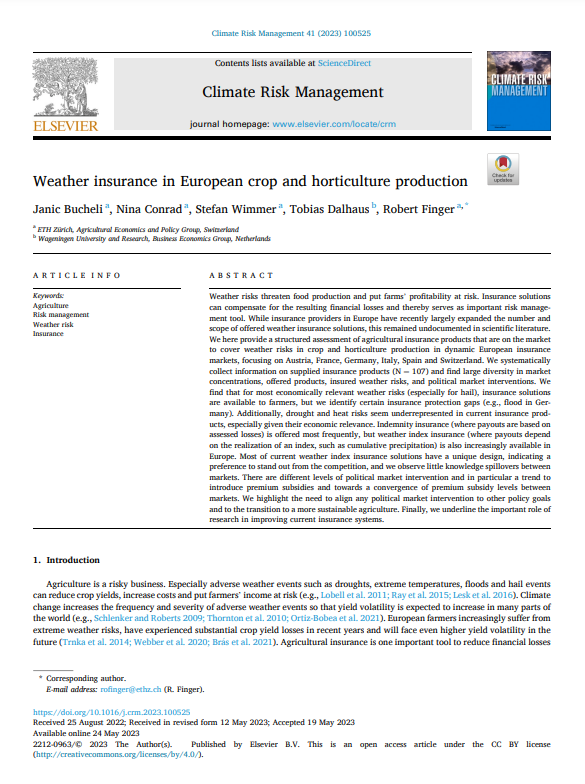Weather insurance in European crop and horticulture production

Weather risks threaten food production and put farms’ profitability at risk. Insurance solutions can compensate for the resulting financial losses and thereby serves as important risk management tool. While insurance providers in Europe have recently largely expanded the number and scope of offered weather insurance solutions, this remained undocumented in scientific literature. We here provide a structured assessment of agricultural insurance products that are on the market to cover weather risks in crop and horticulture production in dynamic European insurance markets, focusing on Austria, France, Germany, Italy, Spain and Switzerland. We systematically collect information on supplied insurance products (N = 107) and find large diversity in market concentrations, offered products, insured weather risks, and political market interventions. We find that for most economically relevant weather risks (especially for hail), insurance solutions are available to farmers, but we identify certain insurance protection gaps (e.g., flood in Germany). Additionally, drought and heat risks seem underrepresented in current insurance products, especially given their economic relevance. Indemnity insurance (where payouts are based on assessed losses) is offered most frequently, but weather index insurance (where payouts depend on the realization of an index, such as cumulative precipitation) is also increasingly available in Europe. Most of current weather index insurance solutions have a unique design, indicating a preference to stand out from the competition, and we observe little knowledge spillovers between markets. There are different levels of political market intervention and in particular a trend to introduce premium subsidies and towards a convergence of premium subsidy levels between markets. We highlight the need to align any political market intervention to other policy goals and to the transition to a more sustainable agriculture. Finally, we underline the important role of research in improving current insurance systems.